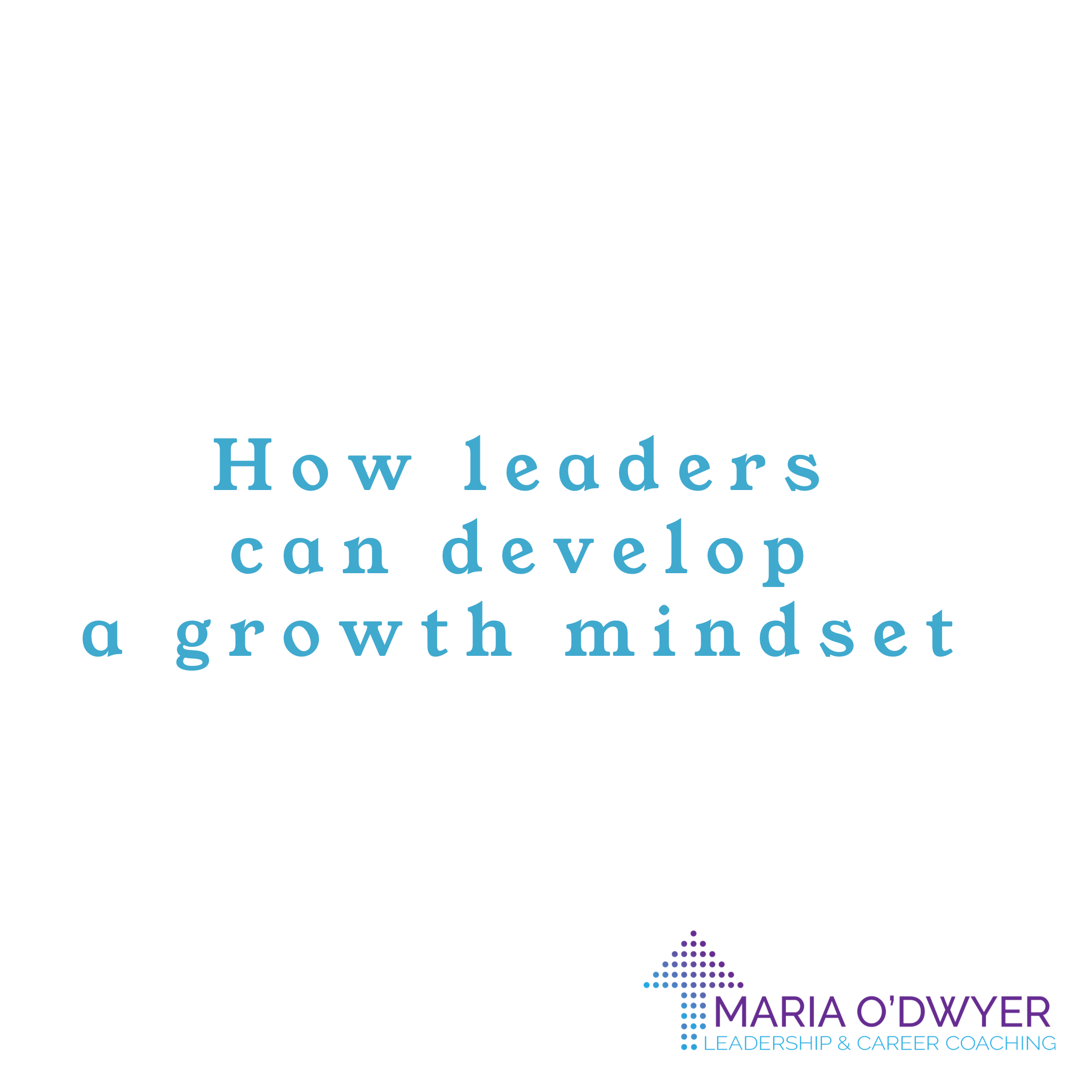There are many attributes of a great leader. One important aspect of leadership is having a growth mindset. Carol Dweck, an American psychologist, identified two mindsets that we navigate through life with: growth and fixed. “In a growth mindset, people believe that their most basic qualities can be developed through dedication and hard work: brains and talent are just the starting point. This view creates a love of learning and a resilience that is essential for great accomplishment”. (Dweck, 2015) Whereas “in a fixed mindset, people believe their basic qualities, like their intelligence or talent, are simply fixed traits. They spend their time documenting their intelligence or talent instead of developing them. They also believe that talent alone creates success: without effort”. (Dweck, 2015) Regardless of whether you are a professional, manager or business owner, developing a growth mindset will help you gain greater professional, team and organisational success.
3 ways to develop a Growth Mindset
1.Challenges & Obstacles
Embrace challenges and obstacles. Accept them as part of the journey instead of avoiding them. It does not matter what industry or organisation you work in, challenges and obstacles are going to be part of your professional life. View challenges as opportunities for self-improvement. Persist in the face of setback and do not give up easily. As a leader, be there for your team when they face challenges and obstacles. Create the environment that allows them to learn from you as they grow and develop. Some questions for you to consider to help you to develop a growth mindset include:
- As a leader, how am I responding to this challenge or obstacle?
- Am I being the leader that I would like to have?
- What else can I try to do to solve this? (Giving up is not an option)
- What can I learn from this situation?
2.Use the word “yet”.
Including the word yet in your sentences, immediately takes you from having a fixed mindset to a growth mindset. Look at this simple example and the difference it makes: “I am not good at bookkeeping” versus “I am not good at bookkeeping yet”. The second sentence creates the intention of a skill that you will learn. It allows you to see things as a learning opportunity and something that you can grow and develop. Dweck says “not yet” has become one of her favourite phrases. It makes sense. Every professional was once an amateur. Anyone who you currently admire had to start out somewhere. They certainly have not started where they currently are. They knew that to get to where they wanted to go, they needed to have patience and to put in the effort and time to learn the new skills. As a leader, gain awareness of the language you are using and use the word yet to create a learning environment. Some questions to consider:
- As a leader, how can you use the word yet to encourage growth and learning?
- What skills would you like to learn that you previously discouraged yourself not to learn?
- Become aware of times you limit yourself and see if you can change this by using the word yet.
3.Criticism
Learn from criticism instead of ignoring useful negative feedback. We are human. We make mistakes and that is ok. The most important thing is to learn from your mistakes and to take on board constructive criticism. This will enable you to achieve greater professional success. As a leader who is able to admit your own failings this will then create a growth culture which fosters honesty, trust and a learning environment. Also be mindful of the method you use to give feedback to others. Give it in a way that promotes learning and future success. By doing these two things you will create a working environment that would be a very enjoyable place to work in. Some questions for you to consider:
- As a leader, are you putting your hands up and admitting your mistake?
- Is anything from the constructive feedback helpful for my growth and development?
- How can I learn from this mistake?
- Can I improve how I provide feedback to others?
Hope you have found something beneficial from this article. Please share this article with anyone you feel might benefit from it.


